Millions of Chinese people worldwide, including our families, have already marked that date down in their calendars as it is one of the most widely feted South East Asia festivals and is celebrated by Chinese communities who live in all corners of the globe. This year, it will fall on Sunday, 22 January 2023.
Chinese New Year is also known as the Spring Festival and marks a very auspicious period in the Chinese Lunar calendar. The celebrations are meant to usher out the old year and bring in good luck and prosperity in the new year. Chinese New Year lasts for 15 days and is celebrated in varying intensities by Chinese all around the world.
Here, we take a look at some fun similar Chinese New Year traditions that you’ll find across different countries such as Malaysia, Singapore, Taiwan, China, Thailand and the Philippines.
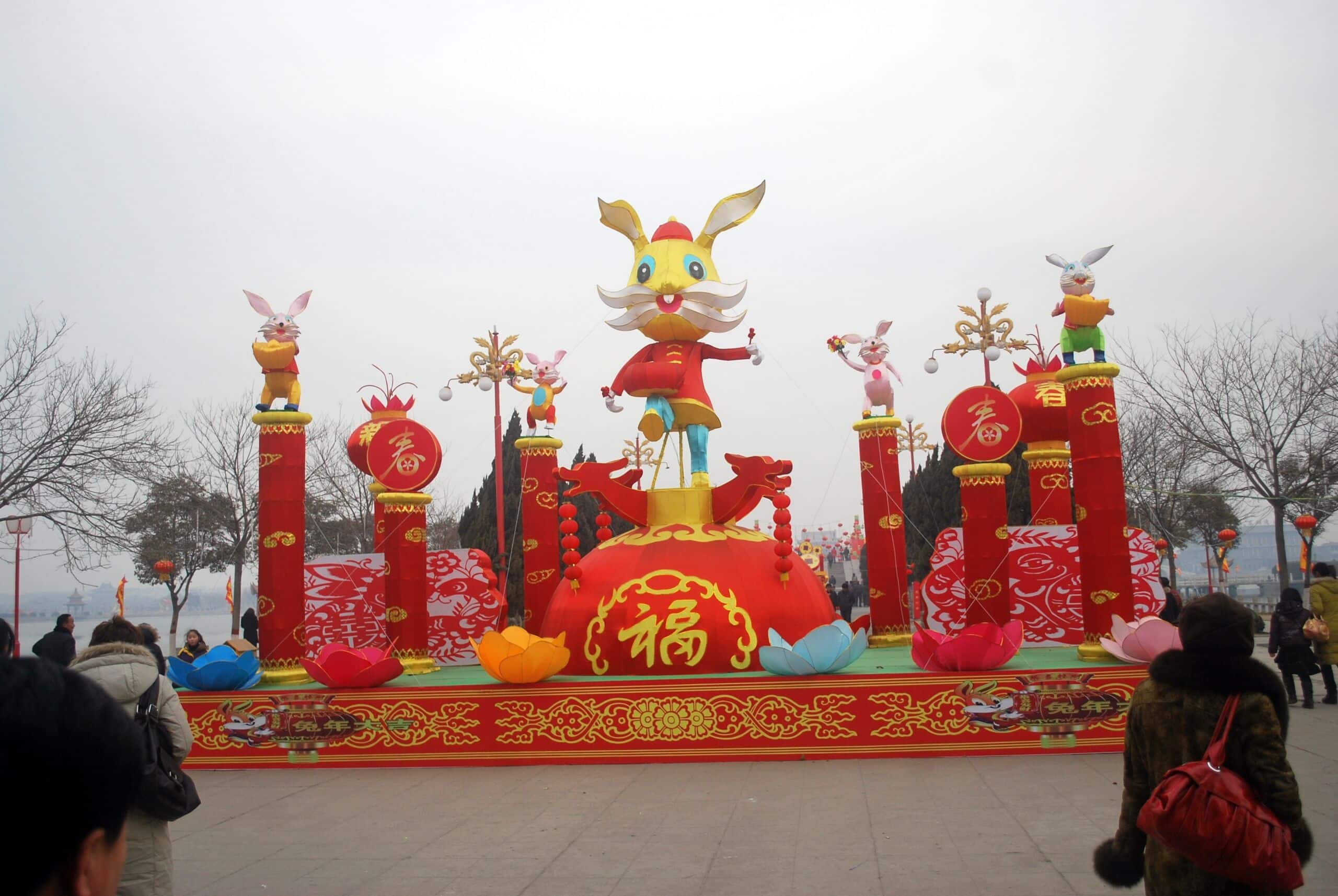
Find out more about the 12 Chinese zodiac animals here.
Curious to know the difference between Chinese New Year and Lunar New Year? Click here to find out more.
8 AUSPICIOUS CHINESE NEW YEAR SIMILARITIES ACROSS ASIA
Editor’s Note: It’s no coincidence that we’ve chosen the number 8, which is believed to be the luckiest number for the Chinese as it is associated with wealth.
1. before the celebrations begin, there’s spring cleaning
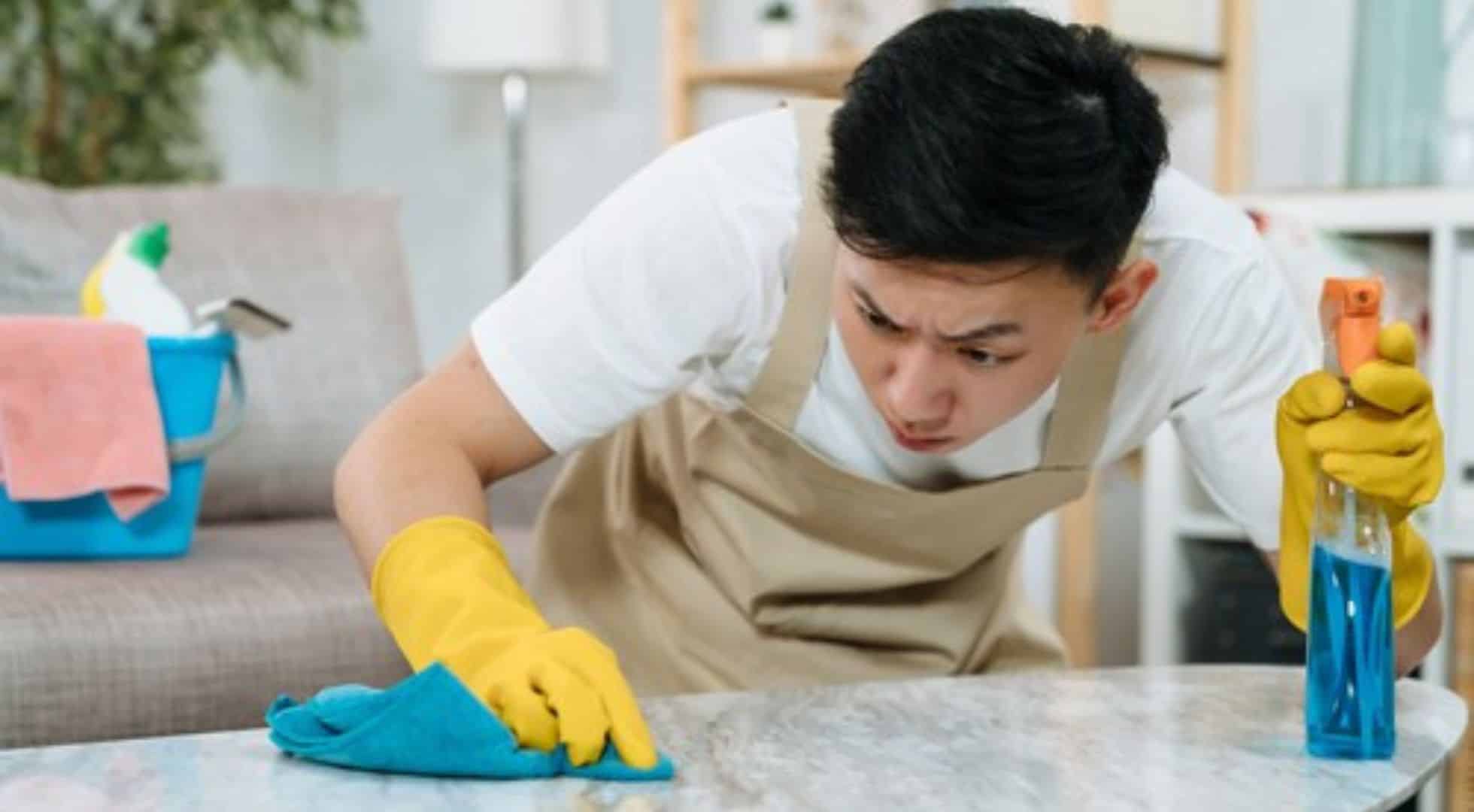


Making Marie Kondo very happy is this integral Chinese New Year tradition – spring cleaning. This extensive tidying up helps declutter junk, but there’s a reason behind it – the Chinese believe that by removing old and unused objects, you’ll make room for new luck in the new year. Sweeping away dust from surfaces and cleaning dirty windows means you are casting out any bad luck from the past year.
All this is done (including hair cuts as well) before the first day of Chinese New Year, as the Chinese believe that sweeping, cleaning, washing and cutting hair may inadvertently sweep away any fresh luck the new year has brought into the house.
In China, they believe taking out the garbage on the first day of Chinese New Year symbolises dumping out good fortune from the house. Washing clothes on the first and second day is also taboo as pouring away water from washing clothes is akin to pouring away wealth. The same applies to washing your hair.
In a similar vein, if you’re in debt, it is an important custom that you should pay it off before the Chinese New Year. This symbolizes “closing the books” at the end of the year and starting life afresh on another. The Chinese believe being in debt in the new year means you’ll be spending the next twelve months the same way.
2. A Feast For The Eyes – Chinese New Year Decorations
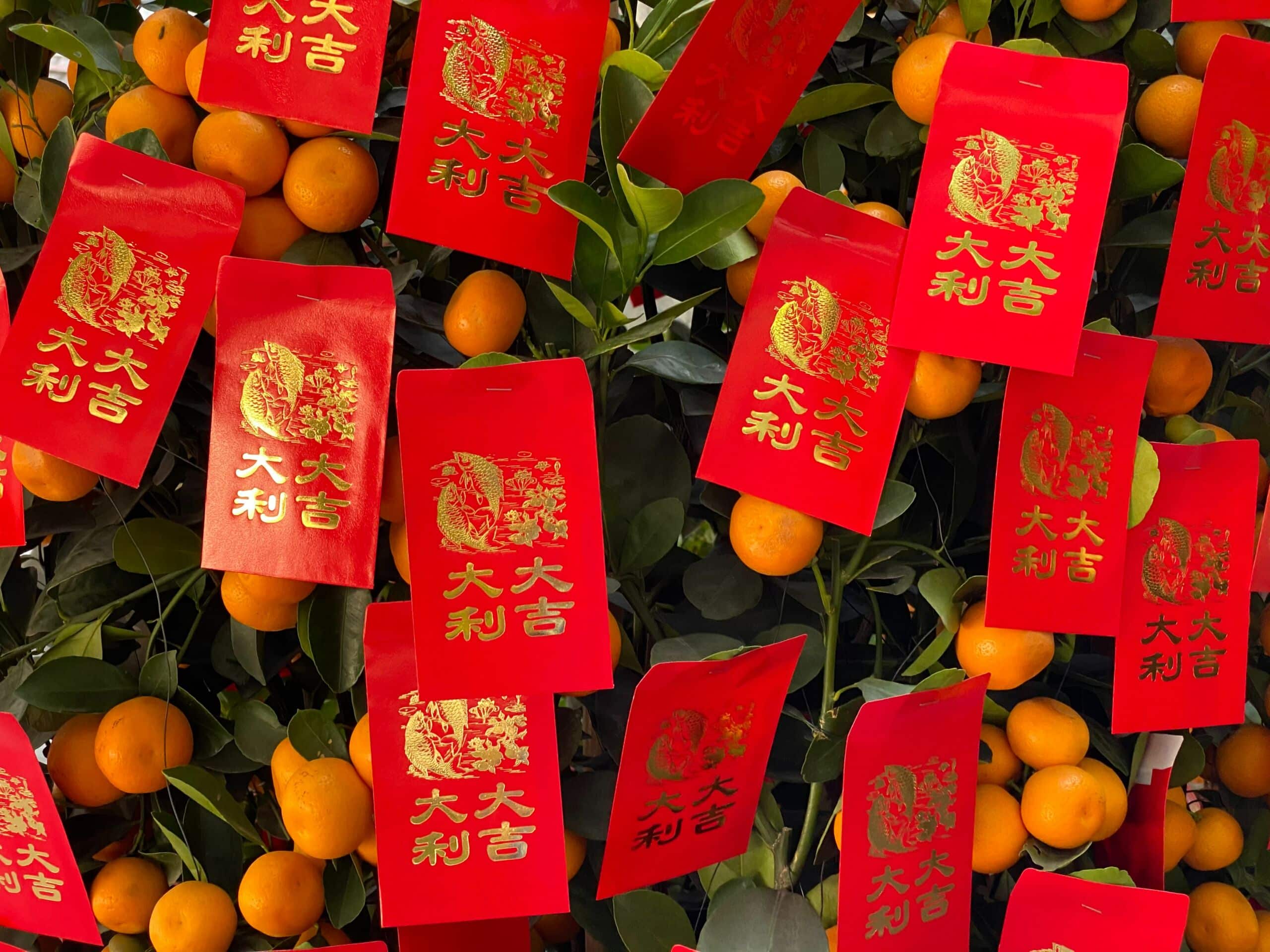


The quintessential Chinese New Year decorations are bright red or gold lanterns. Lanterns supposedly guide good luck into your home, whilst you will see a slew of lanterns in shopping malls, temples, on the streets, and in Chinatowns around the world. Some feature pineapple-shaped ones as the Hokkien and Cantonese words for pineapple sound like ‘prosperity arrives’ so they are considered auspicious fruits.
Chinese homes will be adorned with decorations (once the spring cleaning is done and dusted) before the arrival of the New Year. You can expect a plethora of different rabbit decorations in the upcoming year, plants and flowers, red scrolls, lucky images and wordings.
As Chinese New Year marks the beginning of spring in China, Hong Kong and Macao, the most popular blooming plants used are orchids, peonies, peach blossoms and branches of plum blossoms. Blooming flowers symbolise the coming of spring and wish for a prosperous new year.
Kumquat trees are another symbolic decoration, as the word kum (gam) is the Cantonese word for gold and the word quat (gat) sounds like the Cantonese word for ‘good luck’.
On the front door of Chinese homes during Chinese New Year, you will see the inverted Chinese character fu on paper calligraphy. Fu means ‘good fortune’ so posting the character upside down means the ‘good fortune’ will pour down to them.
Then there are the long red scrolls with Chinese couplets which are often hung outside the front entrance of homes too. Containing words that relate to having a prosperous new year, and wishes of good health and fortune, these are a perfect way for people to show off their (or their kids) calligraphy skills.
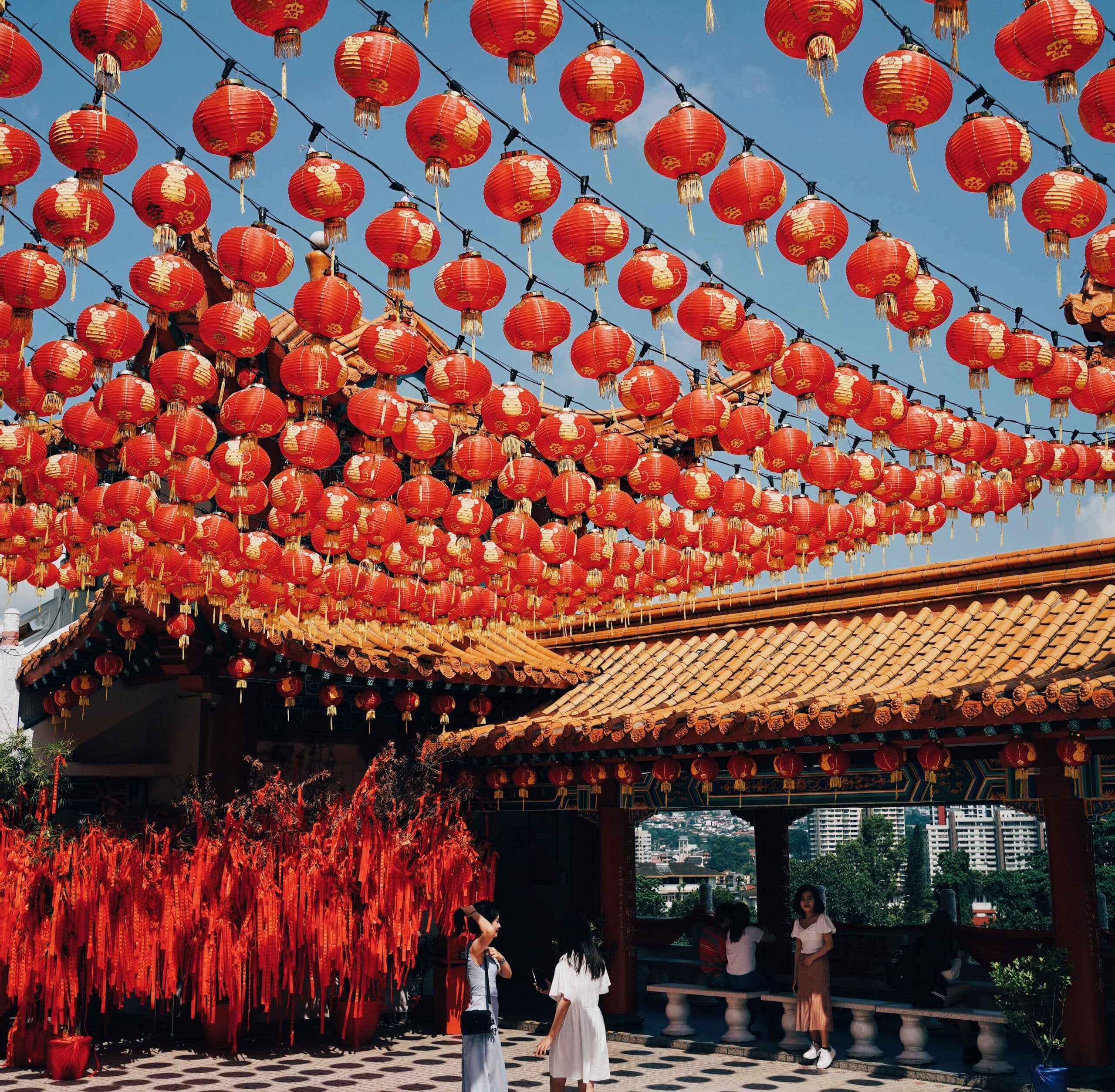


3. Go Shopping – the redder, the better
As with spring cleaning, Chinese New Year means bringing in new things and welcoming the new year with new, fresh clothing is a big part of the process.
Red is the uber-auspicious colour for Chinese New Year, so follow tradition and wear preferably red or other bright colours on the first day of Chinese New Year. Wearing black and white clothes is taboo as they are associated with mourning and death. Shopping malls will be awash with all varieties of shirts, dresses, tops, pants, bags, shoes and underwear in all shades of red that you can possibly imagine.
(Yes, underwear ideally should be red for good luck if you’re going to be playing mahjong or gambling, another Chinese New Year tradition).
Different countries may wear their traditional costume – for women in Korea, it’s the hanbok, in Vietnam, it’s the ao dai. Whereas it’s the iconic cheongsam for countries like China, Taiwan, Singapore and Malaysia.
4. No Presents – It’s All About The Ang Pow
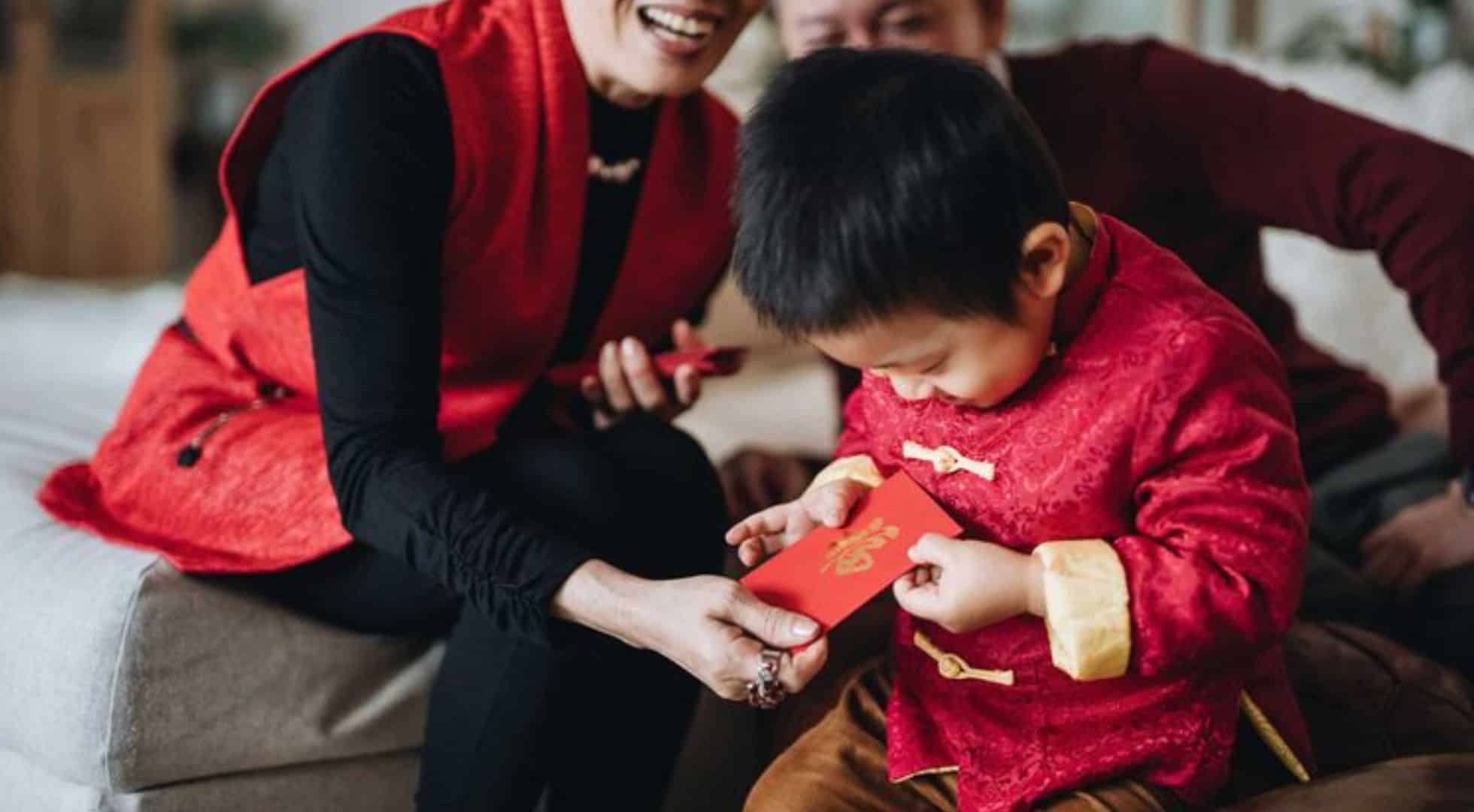


During Chinese New Year, ang pows – red envelopes with striking and unique designs containing cash are gifted by elders and married couples to kids and unmarried people. Working adults may also give back ang pow to their parents, and some husbands will give an ang pow to their wives for their diligence in the family’s Chinese New Year preparations.
There is an etiquette surrounding the giving and receiving of ang pows in South East Asia. Sometimes whilst giving the ang pows, words of wisdom are imparted for the receiver’s health/luck/fortune.
Also, the receiver of the ang pow should not open it in front of the giver as that is considered disrespectful. Givers are also careful to give any amounts with the number four – as it is considered an unlucky number because of its pronunciation which sounds like the Chinese word for death – ‘sei’. More superstitious people will only give ang pows with even numbers and never odd numbers, as it’s believed to bring bad luck.
5. it’s all about being with family
Up there as one of the most important Chinese New Year traditions is the family gathering. For some that live far from home, this may be the only occasion that everyone can get together, which makes it all the more important.
In China, millions travel, sometimes for thousands of miles, to be able to celebrate with their families – a tradition which was greatly impacted by the pandemic for the last three years.
6. New Year’s Eve Reunion Dinner
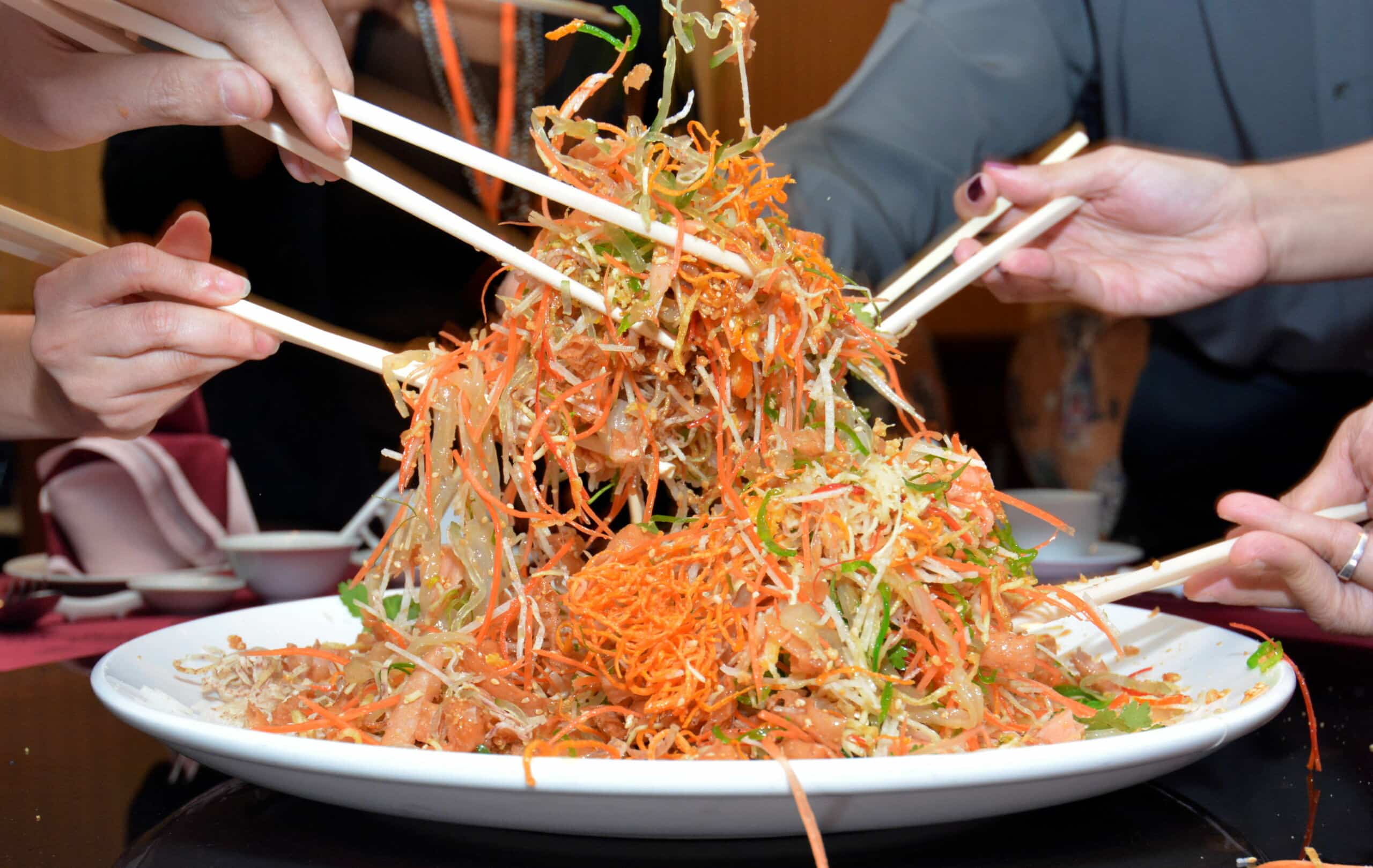


As far as family get-togethers are concerned, it is the Chinese New Year’s Eve reunion dinner that is considered the most important celebration as that is when all the family members have come back home. Older family members will eagerly await the arrival of their offspring and grandchildren from interstate or overseas. The New Year’s Eve feast could have taken weeks (or sometimes months) in preparation as it is the time to indulge; a reward for all the hard work done the previous year.
Many dishes hold a special significance and are often chosen for luck. Plenty of meat implies good fortune and special fish dishes represent abundance. Tables are laden with fruits that are round in shape like mandarin oranges as that represents good fortune; a tradition that originated in China.
Post dinner, some families visit the temples together to pray for good luck, health and fortune. Then it’s back home for more food, talking or playing mahjong late into the night. Kids are allowed to stay up late, to play with fire-crackers to welcome the first day of Chinese New Year – something we were always ecstatic about as children.
Malaysia and Singapore
Yee sang is the quintessential Malaysian and Singaporean raw fish salad dish that is tossed for good luck and prosperity (the higher the better, and messier!) Also popular is nian gao, a sticky cake made with rice flour.
China
Chinese New Year food in northern China is typically made using flour – like baos, dumplings, pancakes and noodles. A family will usually make these dishes from scratch and a cute tradition is to hide a lucky coin in the dumplings for kids to find. Fish is also served, as it signifies abundance.
Philippines
Sticky rice dishes like biko, bibingka and nian gao are eaten as it is believed to help bind families together. Pancit or long noodles means a healthy, long life and good luck for the year ahead.
Taiwan
Nian gao (dumplings) is the most popular dish here. It’s considered good luck to not finish all the food and keep some leftovers from your holiday meals. Pineapple, also considered auspicious, is a popular dessert fruit.
7. Bring on the Mahjong and Gambling
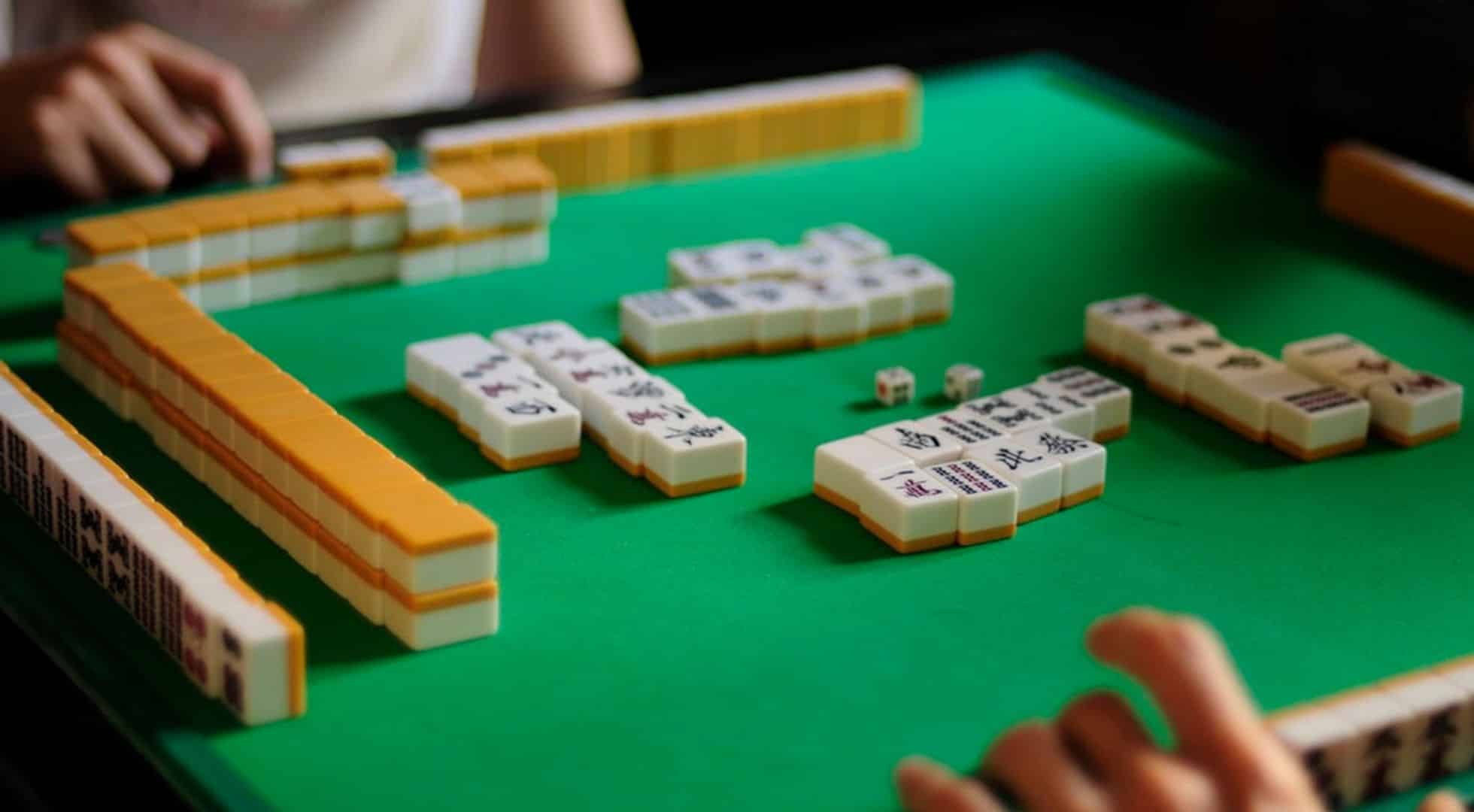


Mahjong is a popular activity specifically during Chinese New Year celebrations at home, as it symbolises friendship and family bonds and helps to pass on the Chinese culture to the next generations.
So all across China, Taiwan, Malaysia, Singapore and other countries, there will be mahjong late into the night, as well as other card games like 21 and Big Two. Usually, copious amounts of alcohol and lots of traditional goodies like pineapple tarts, peanuts, sunflower seeds and cookies and cake of every size, shape and flavour will be on hand to help you through the night. Just remember to wear that lucky new red underwear.
8. Fireworks, lions and dragons herald the celebration



Another super fun tradition for kids of all ages is the fireworks and firecrackers that will be set off to scare away evil spirits and signal the start of a safe and prosperous new year.
In Taiwan, firecrackers were traditionally set off to scare away Nian, a mythical beast of old that is said to have tormented a village many centuries ago. These days, locals set them off to also scare away evil spirits and help celebrate the coming of the New Year. Expect to hear these loud firecrackers shooting up into the sky throughout the night for the duration of the celebrations.
Around the world, expect to see super lively lion and dragon dance performances in offices, malls, homes and as part of street celebrations. In Chinese culture, the lion symbolises strength, stability and superiority, whilst the dragon represents power, boldness and excellence. Dances for both auspicious creatures are performed during festive occasions as a means to chase away evil spirits and welcome prosperous times ahead.
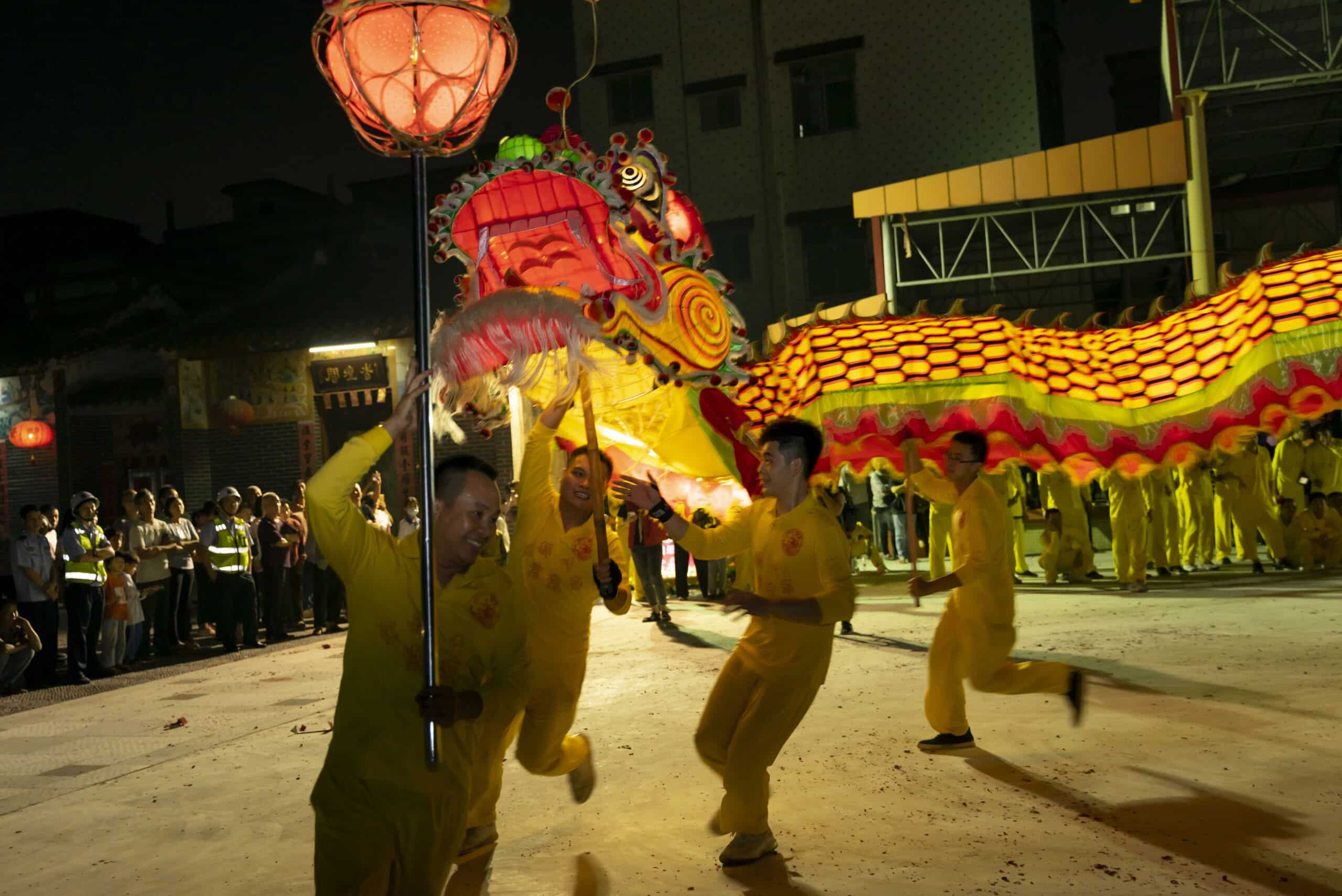


travelling this upcoming CHINESE NEW YEAR? LET US HELP YOU.
REACH OUT TO US AT +603 2303 9100 OR
[email protected]
You may also be interested in:
- Great Getaways During Long Weekends in 2023
- Malaysian Public Holidays 2023: All You Need To Know To Plan Ahead
- 9 Much-Needed Local Weekend Getaways To Ease Your Mind
- Sweet Destinations: Local Desserts To Try As You Travel Malaysia
